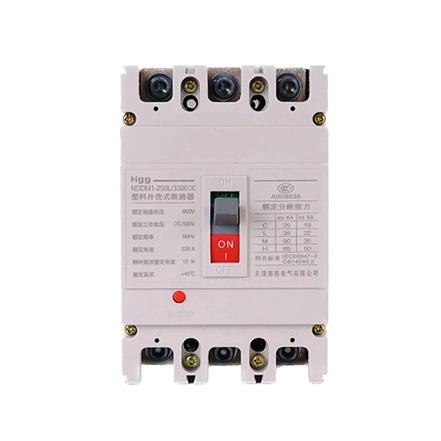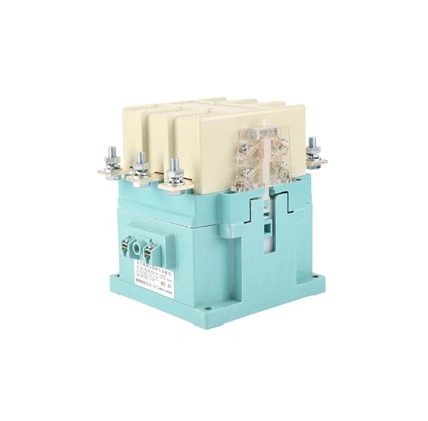In the realm of electrical protection devices, circuit breakers are essential components that ensure the safety and reliability of electrical systems. Over the years, there have been significant advancements in circuit breaker technology, leading to the development of two primary types: Molded Case Circuit Breakers (MCCBs) and Traditional Circuit Breakers (TCBs). Both serve the same purpose of interrupting the flow of current in the event of an overload or short circuit, but they have distinct features and applications. In this blog, we will compare MCCBs and TCBs, exploring their differences, advantages, and disadvantages, to determine which type is better suited for different electrical system requirements.
What are Molded Case Circuit Breakers (MCCBs)?
MCCBs are modern circuit breakers that come with a thermoset plastic casing, providing robust insulation and protection against external elements, like the dc molded case circuit breaker. They are designed to protect electrical systems from overloads and short circuits, automatically interrupting the current flow when such abnormalities occur. MCCBs are widely used in residential, commercial, and industrial applications, providing reliable and precise protection to a range of electrical loads.

Understanding Traditional Circuit Breakers (TCBs)
Traditional Circuit Breakers, also known as Miniature Circuit Breakers (MCBs), are the older and more common type of circuit breakers. They typically come in smaller sizes and are widely used in residential and commercial installations to protect circuits and appliances from overcurrents. TCBs use a bimetallic strip or electromagnet mechanism to trip when excessive current flows through the circuit.
Key Differences between MCCBs and TCBs
a. Size and Current Capacity: MCCBs are generally larger and have a higher current capacity compared to TCBs. This makes them suitable for protecting larger electrical loads and industrial applications, while TCBs are better suited for residential and light commercial applications.
b. Tripping Mechanism: MCCBs use advanced trip units, such as thermal-magnetic or electronic trip units, offering precise and adjustable protection settings. In contrast, TCBs rely on simple mechanisms like bimetallic strips or electromagnets, providing basic protection without customization options.
c. Application Range: Due to their higher current capacity and advanced trip units, MCCBs can handle a broader range of electrical loads and offer enhanced protection in complex systems. TCBs are more suitable for simple residential and light commercial applications.
d. Selective Coordination: Selective coordination is crucial in complex electrical systems to ensure that only the faulted circuit is isolated while keeping other circuits operational. MCCBs can achieve better selective coordination due to their advanced trip units, which allow precise coordination settings.
Advantages of MCCBs
a. Precision Protection: MCCBs offer precise and adjustable protection settings, allowing users to tailor the tripping characteristics to specific applications, ensuring maximum protection and system reliability.
b. Enhanced Selective Coordination: MCCBs can achieve better selective coordination, minimizing downtime during fault events and improving the overall reliability of electrical systems.
c. Advanced Features: Many modern MCCBs come with additional features like remote monitoring, communication capabilities, and self-diagnostic functions, providing real-time data analysis and predictive maintenance.
d. High Current Capacity: MCCBs can handle higher current loads, making them suitable for industrial and heavy-duty applications.
Advantages of TCBs
a. Cost-Effectiveness: TCBs are generally more cost-effective than MCCBs, making them an attractive option for simple residential and light commercial installations.
b. Compact Size: TCBs come in smaller sizes, making them ideal for space-constrained installations.
c. Simplicity: TCBs have simple tripping mechanisms, making them easy to install and maintain.
Disadvantages of MCCBs
a. Cost: MCCBs are generally more expensive than TCBs, which may be a consideration in budget-constrained projects.
b. Complexity: The advanced trip units and features in MCCBs may require specialized knowledge for proper configuration and use.
Disadvantages of TCBs
a. Limited Current Capacity: TCBs have lower current capacity, limiting their use in industrial and heavy-duty applications.
b. Basic Protection: TCBs offer basic protection settings, which may not be sufficient for complex electrical systems.
Both Molded Case Circuit Breakers (MCCBs) and Traditional Circuit Breakers (TCBs) are vital components in electrical systems, providing protection against overloads and short circuits. The choice between the two depends on the specific application, load capacity, and required features. MCCBs offer advanced protection, precise settings, and enhanced selective coordination, making them ideal for industrial and complex installations. On the other hand, TCBs are cost-effective, compact, and well-suited for simple residential and light commercial applications.
Ultimately, the selection of the right circuit breaker type should be based on a thorough assessment of the electrical system's requirements, load capacity, budget, and future expansion plans. Integrating the appropriate circuit breaker into electrical installations is crucial to ensure the safety, reliability, and efficiency of the system, safeguarding both property and human lives.





